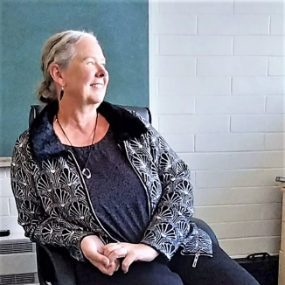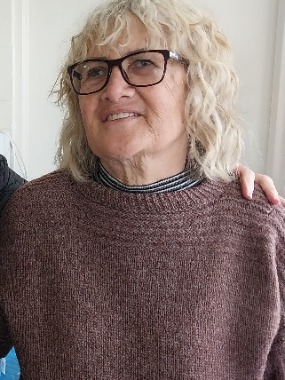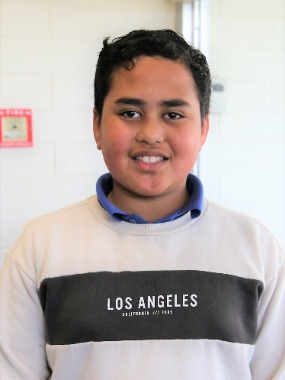- Nuhaka-Ward-Chapel
- Nuhaka-Ward-Meeting-House-As-School
- Room-3-A.jpg
- Nuhaka-School-Lunchtime
- Nuhaka-Ward-Meetinghouse-Gymnasium
- Nuhaka-Ward-Stage-hosting-senior-student-class
- Nuhaka-Kids-sing-to-the-visiting-dignitaties
- Elder-Meurs-Shares-A-Funny-Story
- Elder-Meurs-talks-to-Nuhaka-kids
- Nuhaka-School-Principal-Raylene-McFarlane-and-students
- McFarlane-Thanks-Area-President
| Temple Square is always beautiful in the springtime. Gardeners work to prepare the ground for General Conference. © 2012 Intellectual Reserve, Inc. All rights reserved. | 1 / 2 |
As Raelene McFarlane, principal of the Nuhaka Primary School in Nuhaka, New Zealand, entered her school, she couldn’t believe her eyes.
Cyclone Gabrielle had blasted the area during the previous 48 hours, and her school was a wreck. Water had entered the building causing damage everywhere. And worse, the sewer had backed up into the building and untreated wastewater had infiltrated everything.
“Initially we knew it was a mess, but we expected that we would get things cleaned up and reopen,” McFarlane recalled. “About three weeks after the cyclone, they told us we would not be reopening immediately because it was going to take some time to really sort things out."
"The next week they came back and said this building could never be used again.”
“At that point in time I guess I went into ‘adrenaline mode,’ and I just knew I had to find some place for these kids to go to school.”
McFarlane said the rural Nuhaka School was not set up for on-line learning like schools in bigger towns and cities. She said they did not have the technology required to keep everybody learning at home.

Nuhaka-Primary-School-Principal-Raylene-McFarlane
Raelene McFarlane, principal of the Nuhaka Primary School, smiles as she gazes out her office window, reflecting on the day she learned that the Nuhaka Ward meetinghouse was being made available for her school by The Church of Jesus Christ of Latter-day Saints after Cyclone Gabrielle devastated their building.© 2023 by Intellectual Reserve, Inc. All rights reserved.So, she turned to the strength of the Nuhaka community, looking for options that would allow her to keep her 90 students together and their studies moving forward. It was up to the Education Ministry to determine the fate of her school.
In a bow to William Shakespeare: “To rebuild or not to rebuild? That became the question.”
“I had only been here six months and I was already facing the reality that unless we could get some assistance from somewhere, it might be the shortest tenure of a principal anywhere,” she laughed.
She investigated the local Māori marae, community buildings, the fire station hall, even a wool shed on the highway to Gisborne, before finally arranging temporary classrooms in the community of Wairoa, 32 kilometres away.
“We split the kids up, with the younger students going to St. Joseph’s School and our senior kids to the community centre,” she explained. “Eventually it became clear we had to find another situation, that this one couldn’t go on for very long.”
About that same time, Jared Christy, a leader in the Nuhaka Ward (a local congregation) of The Church of Jesus Christ of Latter-day Saints, and whose son attended Nuhaka Primary School, had a novel idea.
He approached the ward’s bishop (lay minister) Blue Maru, and Maui Aben, president of the Gisborne New Zealand Stake (similar to a diocese), and asked if there was any reason why the school could not meet in the Church’s Nuhaka meetinghouse? The answer was, “That’s a great idea, but can we do that?”
The idea was soon passed forward and eventually arrived on the desk of General Authority Seventy and Pacific Area President Elder Brett K. Nattress. He and his counselor’s Elder Peter F. Meurs, (now the Area President) and Elder Taniela B. Wakolo asked the same questions. They took the idea to the area’s legal advisors who told them that an arrangement of this type had never been made before.
“The initial thought was that it couldn’t be done,” Elder Meurs said recently. “But we liked the idea, so we asked our legal people to see what was possible.”
While the Church’s area legal team began considering options, Principal McFarlane was down in Wairoa, “running ragged” trying to keep her school held together. The split-locations of the younger and older aged students were adequate, but she could tell the morale of both teachers and their charges was beginning to suffer.
“The teachers had to carry all of their materials and gear back and forth between Nuhaka and Wairoa every day and they were just exhausted,” she said. “And we really didn’t realize how ‘alone’ we all felt—we didn’t have any shared breaks or lunches or other type of togetherness.”

Michelle Maru, Nuhaka, New Zealand
Michelle Maru is both a teacher at Nuhaka Primary School, and a member of the Nuhaka Ward of the Church of Jesus Christ of Latter-day Saints. She says holding school in the ward meetinghouse has had a wonderful, "calming" effect on all of the students.© 2023 by Intellectual Reserve, Inc. All rights reserved.Plus, the $500 per day cost to rent facilities was proving unsustainable.
“Everything contributed to this constant state of upheaval and panic by everyone,” McFarlane said.
This was when a ray of sunshine beamed through the clouds of despair.
Christy, Bishop Maru, and President Aben approached McFarlane and said they had an unusual proposal. They told her that preliminary approval had been given for the school to use the Nuhaka Ward meetinghouse as their school, on a short-term basis, until a new building could be built. Other approvals would have to be obtained, but the Church was willing to do it as part of a no-cost, shared-use arrangement.
“My immediate thoughts were that this is the answer we’ve been searching for,” McFarlane remembered. “We saw our school not surviving, and I honestly don’t know where we would all be right now if this opportunity hadn’t been provided.
“The ministry had made it clear early on that if we couldn’t make this work, they would close our school—we would go elsewhere permanently,” she explained.
“This building was my last hope!”
But many things had to happen before the Nuhaka Ward meetinghouse could become the Nuhaka School during the week. The Education Ministry had minimum standards for heating and cooling, for example, so they upgraded those systems within the building. While the building has a kitchen, it was not designed with everyday use in mind. Arrangements were made to bring in food daily to feed hungry children and staff.
Finally, in June, the important shared-use agreement between the Church and the education ministry was reached. On 16 June, school began in the Nuhaka Ward meetinghouse.
The school takes advantage of every possible space available in the meetinghouse, except for the chapel itself, which is closed. But teaching activities are going on in every classroom, the Principal’s office is in the nursery, and the administrator is set up in the clerk’s office. Even the stage is utilized, hosting the class for the oldest children.
Michelle Maru, a member of the Church's Nuhaka Ward, is also one of the teachers in the school. She says the impact of the building on the students has been amazing to witness.
“The children seem to be so much more kind and patient with each other,” she said. “And I think they realize that they are meeting in a place that is a lot more than a school building.”
“One little boy told me he loves going to school here because of the pictures of Jesus that are everywhere,” she said.
Elder Meurs took note of that fact when he and Elder Jared Ormsby, an Area Seventy, visited on 4 August. The first room they entered was the 5 to 7 year-old “Juniors,” and they were immediately swarmed by little hands and faces, lovingly wanting to show their thanks.
Later, when visiting with Principal McFarlane, she commented on the wonderful behaviour of the children since they had been using the meetinghouse for school. Elder Meurs seized on the moment to explain the calming influence the building provides.

Tarnae-Solomon.JPG
Tarnae Solomon, of Wairoa, New Zealand, is a senior student at the Nuhaka Primary School.© 2023 by Intellectual Reserve, Inc. All rights reserved.“It’s easy to understand why the children are so well-behaved in this building,” he explained. “This building has been dedicated to our Saviour, Jesus Christ.”
“It’s His spirit that is felt here, and it influences these children, and their behaviour toward one another.”
An assembly of the students held that day, featuring songs of thanks and gladness prepared for Elder Meurs and Ormsby and guests from the Nuhaka Ward, confirmed that they all were thankful for the use of the building as their school.
Tarnae Solomon, a senior student from Wairoa, offered his thanks to all who worked to make the meetinghouse available to the school. “We’re all so glad that we have this place to go to school for a while, and that we can all be together again in one place.”
At least for a little while, Nuhaka Primary School has risen from the remnants of Cyclone Gabrielle, and the students and teachers are so glad to have a home.
“Thank you is a term that is just not big enough in this case,” Raelene McFarlane said. “This is truly the spirit of the Māori word, ‘Aroha;’ that’s the closest thing that comes to my mind.”
“The love, the concern, the caring . . . [The Church] saved us, one hundred percent. That is my belief, so thank you so much.”